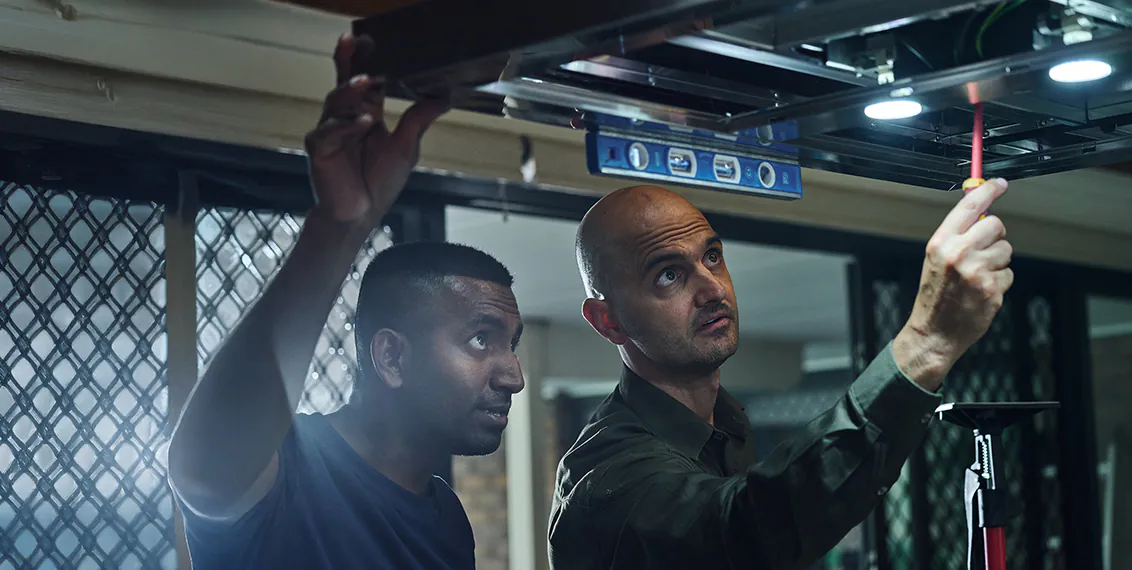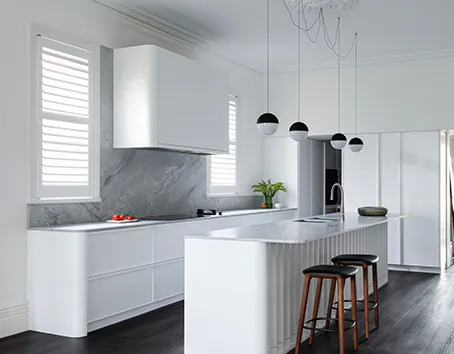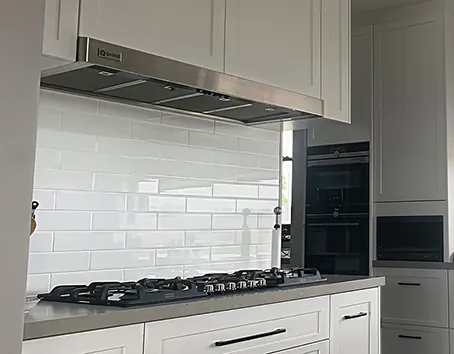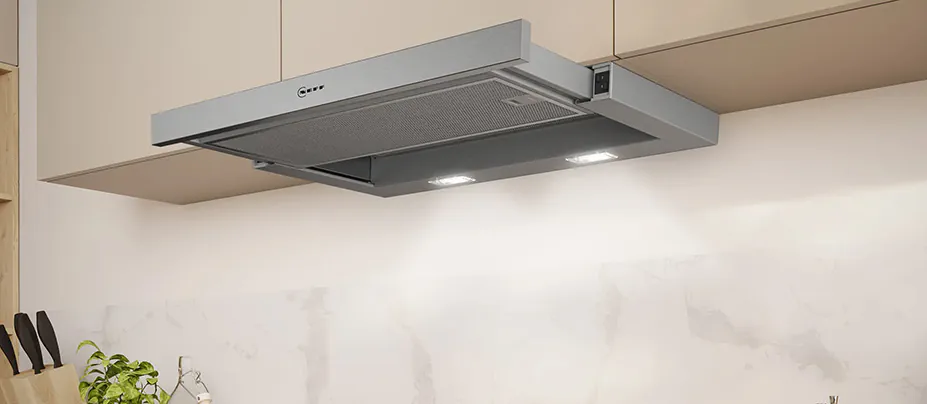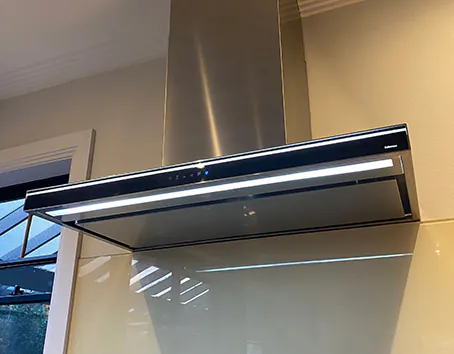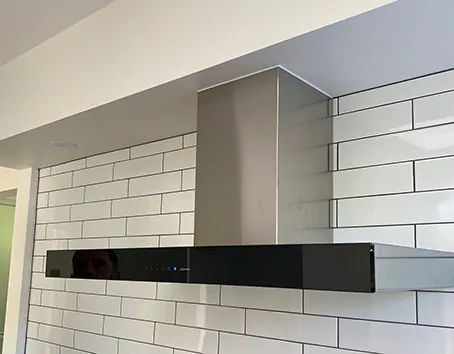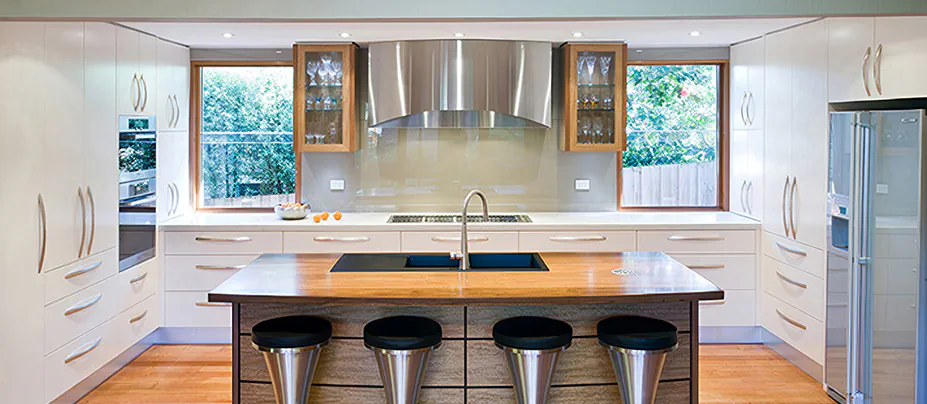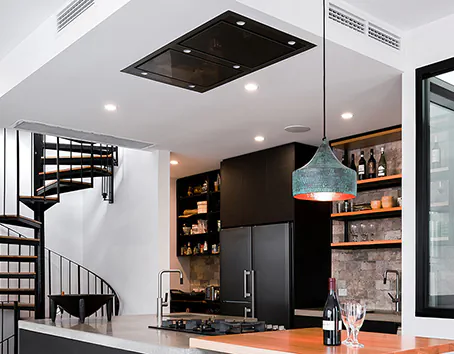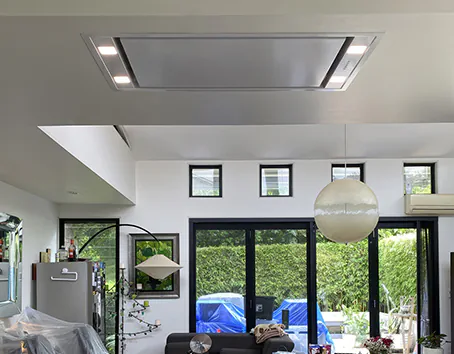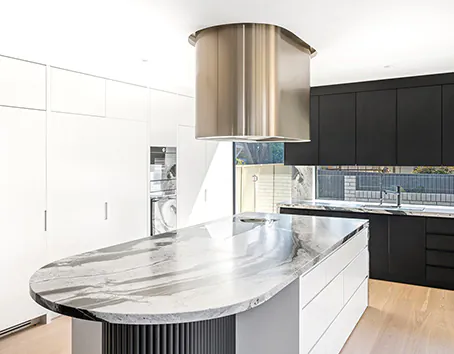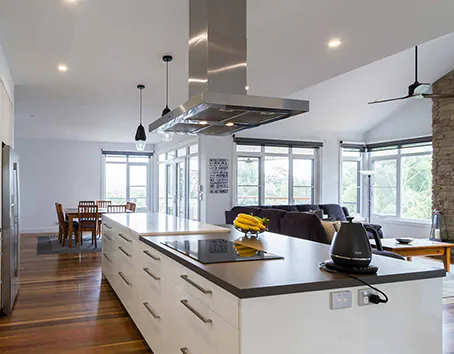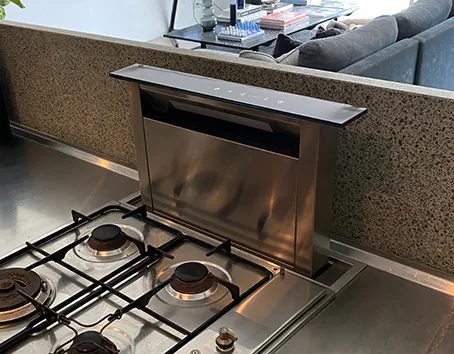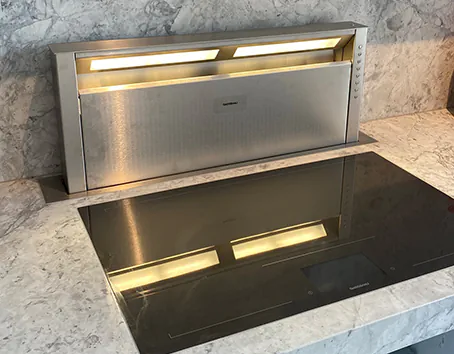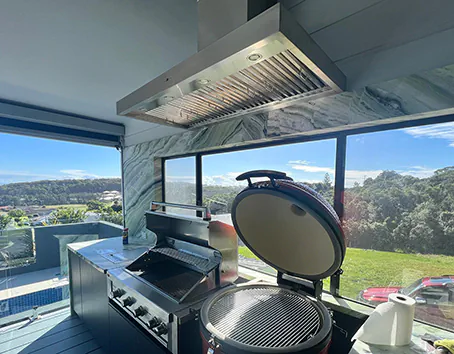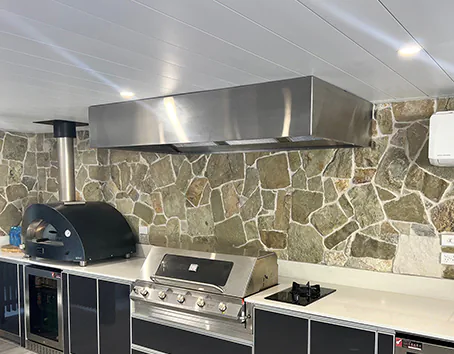Read time: 9 mins
Do you have a kitchen? Do you cook in your home? If so, ventilation is an important consideration for the health of you and your family. Rangehoods keep the nasty stuff out of your home while preventing fire hazards that may arise when cooking!
There are many types of range hoods available on the market today; you will need to know how they work before making a decision on what to purchase for your next kitchen or build. If you do not select the right rangehood system for your kitchen, you could find yourself running into the following issues:
- Rangehood becomes blocked with grease, causing a fire hazard.
- Gas and exhaust fumes backing up in your home due the rangehood being too small for the kitchen.
- Poor Ventilation and Lack of Air Flow due to improper ducting planning.
In this blog post, we'll discuss the types of rangehoods and ducting available, what is best for your needs and what to consider when planning your next kitchen.
Types of Rangehoods & Exhaust Systems:
As far as ventilation goes, there are several different rangehood systems that all dispose of the smoke from your cooking differently. Depending on the area that you are fitting a rangehood as well as the number of other factors will determine what rangehood systems are suited for your home.
The most common types of rangehoods include wall-mounted, ceiling-mounted, which you will see in most homes in Australia. Some other less common exhaust range hoods include downdraft, and ductless range hoods, or recirculating rangehood.
Wall Mounted Range Hood
Wall mounted rangehoods are the most common type of exhaust range hood for a home kitchen because they are generally the most affordable and can be conveniently placed in most kitchens.
A wall-mounted rangehood works by taking the fumes from the cooking area and moving them to a vent that is typically positioned on top of the range hood or within the wall it is mounted to. These types of Rangehoods are most commonly placed into the cabinets above your cooktop however other types of wall-mounted range hoods are becoming more popular in modern kitchens.
The ducting for a wall-mounted range hood is typically placed in a vicinity of the range hood that is easily accessible and out of the way from cooking. This is commonly within the above cabinetry or within the adjacent wall. Traditionally the ducting will deposit smoke from an exit on the side of the house, on the roof, or both.
The range hood can be mounted on an interior or exterior wall, depending on factors such as the desired location for ventilation, ease of access to power sources, whether there are any windows nearby that could cause interference and many other considerations.
Most common wall-mounted Rangehoods
Undermount Rangehood
Slideout Rangehood
Canopy Rangehood
Fixed Rangehood
The benefits of a wall-mounted range hood include:
Wall-mounted rangehoods are one of the most practical and affordable ventilation options for most Australian kitchens. They offer a larger catchment area than fixed undermount models, making them highly effective at capturing smoke and steam.
Most wall-mounted designs have a depth of around 500mm, which helps contain cooking fumes directly over the cooktop. Their versatility is another key benefit — available in a wide variety of sizes, configurations, and price points, they can be positioned either flush against cabinetry or extended from the wall to suit the layout of your kitchen.
- Practical for most kitchen layouts
- Larger filter area than undermount models
- More budget-friendly than ceiling or downdraft systems
- Effective smoke capture with deeper profiles
- Flexible mounting configurations
When a Wall-Mounted Rangehood Won't Suit
While wall-mounted rangehoods suit most kitchens, there are situations where they may not be ideal. For example, if your kitchen lacks overhead cabinetry or has plumbing or wiring blocking wall space, fitting one can be difficult. They're also less suited to temporary setups or homes without an existing vent system in place — unless a recirculating model is used.
- No overhead cupboards
- Obstructed wall space
- Not suited to temporary homes
- No vent access (unless recirculating)
- Retrofitting may be required
Ceiling Mounted Range Hood
Ceiling mount range hoods are another type of rangehood that are becoming much more common particularly in modern and high-end kitchens.
A ceiling-mounted range hood works similarly to a wall-mounted system in that it is situated above the cooktop or stove and sucks the smoke from cooking through an exhaust system. Unlike a wall-mounted range hood, the exhaust system is usually located in ducting that connects to the roof vent, instead of being attached directly to the range hood.
The benefits of a ceiling-mounted range hood include:
- High aesthetic. Great for High-end Kitchens. Minimalist options.
- Rangehood can be better situated directly over the cooktop than some wall-mounted systems.
- Rangehoods are mounted on the roof which can be the best option for certain kitchen designs that incorporate an island cooktop.
When a Ceiling-Mounted Rangehood Won't Work
Ceiling-mounted rangehoods are sleek and effective, but they're not right for every space. If your kitchen has structural obstructions like beams or plumbing in the ceiling, or if your budget doesn't allow for the typically higher cost, they may not be the best fit. These systems also require proper roof ducting, as recirculating options aren't available — which can make retrofitting more complex.
- Higher upfront cost
- Not suited to temporary setups
- Ceiling obstructions like beams or pipes
- No roof ducting access
- No recirculating option available
The Different types of Ceiling-Mounted Systems
Ceiling Cassette Rangehood
Island Rangehood
Downdraft Range Hood
A downdraft range hood is a type of rangehood whereby the cooking ventilation is located at the bottom of your stove instead of over it, which helps reduce hot air from rising back up to cooktop level.
A downdraft exhaust range hood works by removing smoke and contaminates created by the cooktop from rising and dispersing back into the kitchen. Unlike a traditional updraft rangehood that will ‘pull' smoke upwards into a vent. A downdraft pushes the smoke down. This has some major benefits, and some limitations too.
Beneath your range, a downdraft exhaust fan is positioned to draw the smoke out of your home through an opening or window at floor level, and then vent it outside. The ductwork arrangement in this type of system typically requires a relatively short duct run to get the air outside.
Some downsides of this type of range hood are that it can be difficult to fit and is not as effective at removing smoke when you're cooking high fatty meats like bacon or sausage.
However, many people prefer downdraft exhaust because they believe its vents do a better job than an updraft exhaust by removing smoke from the kitchen.
The benefits of a downdraft range hood include:
Downdraft rangehoods offer several practical and aesthetic benefits. They tend to require less maintenance than traditional systems and are easier to clean thanks to their accessible, countertop-level components. Because they draw air downward, they also operate more quietly and remove fumes directly at the source, helping keep your kitchen air cleaner. Their slim, stylish design makes them a great fit for modern spaces where overhead units might interrupt the layout.
- Lower maintenance needs
- Easy to clean at benchtop level
- Quiet operation
- Captures fumes at the source
- Sleek and space-saving design
When a Downdraft Rangehood Isn't Ideal
Downdraft systems aren't always the right fit, especially in existing kitchens. They can be costly and challenging to retrofit, often requiring major modifications. Because the unit sits below the benchtop, it takes up valuable storage space and may obstruct open-plan views — particularly on island benches. They're also less effective for heavy-duty cooking, such as grilling high-fat meats.
- Higher cost than other systems
- Retrofitting can be complex
- Reduces under-bench storage
- Obstructs views on island benches
- Less effective for greasy cooking
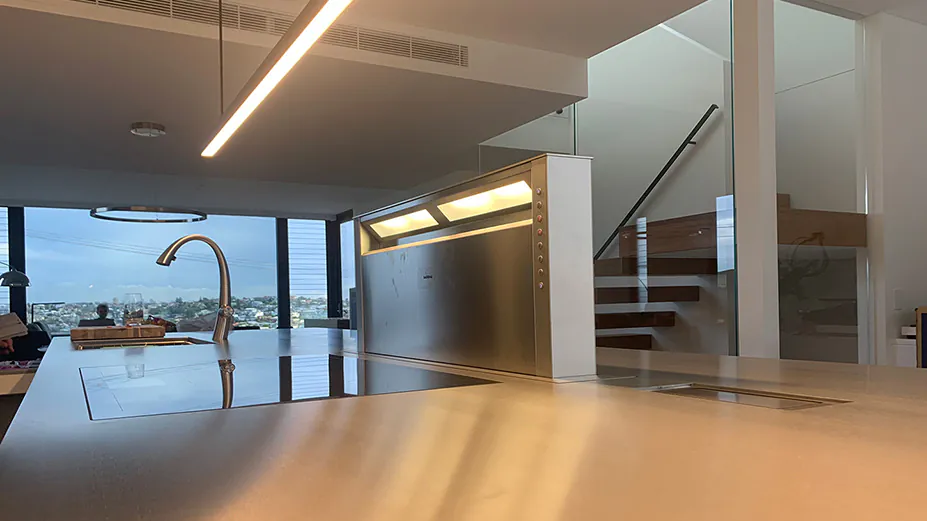
Ductless / Recirculating Rangehood
A ductless rangehood or otherwise known as a recirculating rangehood is a type of Rangehood Exhaust that instead of removing the smoke out of the home through a vent in the roof or wall, will clean the air before releasing it back into the room. This is done through a filtering system that uses charcoal to separate smoke and fumes from the air before it is re-released.
Ductless Range Hoods are a fantastic option for those who have their range set up in a tight space, such as next to the dishwasher or stove because they don't require ductwork. They also work well for smaller kitchens because they provide good ventilation without taking up too much room.
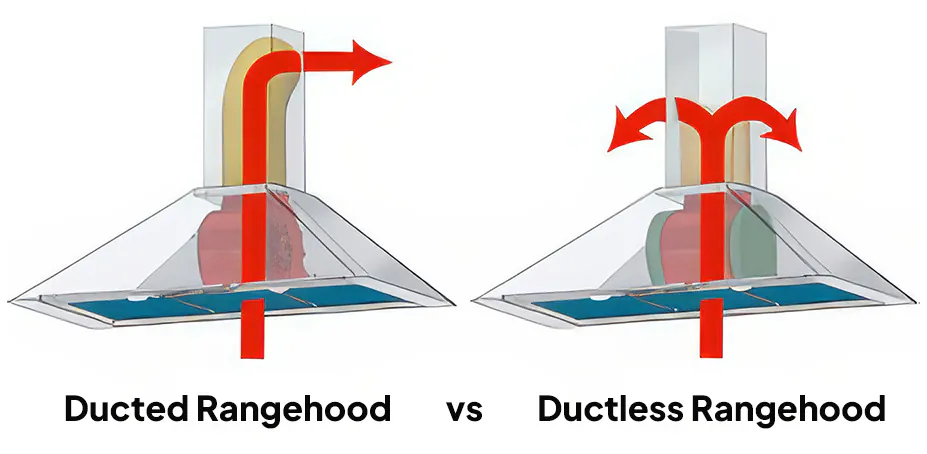
Benefits of Ductless Rangehoods
Ductless or recirculating rangehoods are ideal for smaller kitchens or situations where ductwork isn't practical. They're easier to set up, often more affordable in retrofit scenarios, and take up less space than larger wall or ceiling-mounted options — making them a smart solution for compact or older kitchens.
- No ducting required
- Cost-effective in existing kitchens
- Compact and space-saving
When Ductless Rangehoods Fall Short
While ductless rangehoods are convenient, they're not suited to every kitchen. In larger spaces or for households that cook frequently — especially with high-fat foods — these systems may struggle to keep up. Their filters simply aren't as effective at handling heavy smoke and grease output.
- Not ideal for large cooktops
- Less effective with greasy cooking
Outdoor / Alfresco Rangehoods
An outdoor rangehood or otherwise called an alfresco rangehood is a system that is specifically designed for placement outside over a large grill or BBQ.
Similarly, to the other rangehood systems mentioned in this blog, an alfresco rangehood system is available in many different styles from your Canopy Rangehood mounted to a wall through to your Island Rangehoods mounted to the roof.
Where an outdoor rangehood is different is its increased ability to remove large amounts smoke, particularly from high fatty foods that are commonly cooked on a BBQ (Burgers, Steaks, Sausages etc). Outdoor rangehoods are generally more powerful, have a larger suction size and as a result will traditionally start at higher prices than your standard system.
Due to the higher demands, ductless or recirculating range hoods are not a viable option for your alfresco area as they will not handle the amount of smoke.


